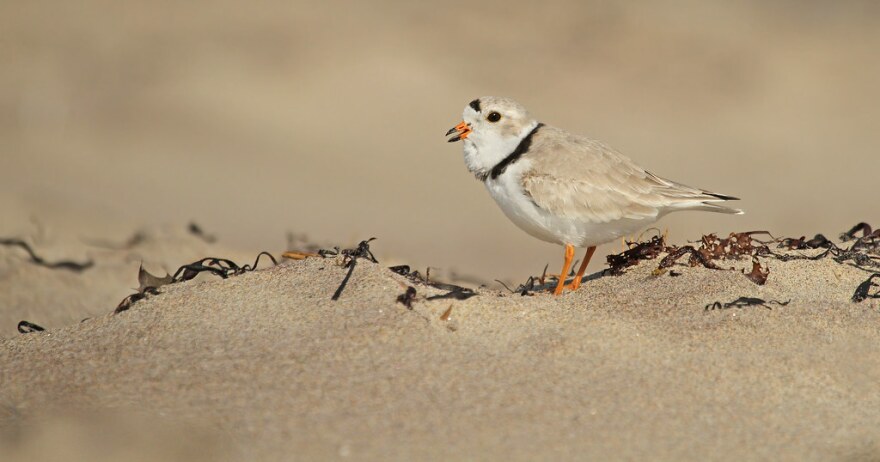In the course of doing some solo field work to protect coastal waterbirds over the last week, one thing became clear – people are already out on the beaches, and in bigger numbers than usual for this time of the year. Many of them with big, galumphing, unresponsive dogs with little interest in social distancing, but that’s a topic for another day. Luckily for nature folk, some birds are also on the beaches. So let’s check in with your favorite, or maybe least favorite, local barrier beach birds and see what they’re up to. I’m of course talking about Piping Plovers.
Most of our local Piping Plovers are back and are in the process of establishing territories. Currently they are spending a lot of their time standing still, often in the lee of a pile of seaweed, such that you could walk right by them with no clue they exist. They are biding their time before egg laying begins in two or three weeks, feeding and resting the days away. But these quiet days are frequently punctuated with some pretty exciting territorial skirmishes, and with some luck you can catch some of the action. Listen for the classic sound of a male engaged in their “figure 8” territorial flights over prospective nest sites and mates. These flights do circumscribe a near perfect “8”, and often precede some serious squabbling. Males loudly chase each other away from their territories, sometimes get violent, and also perform comical parallel running displays to precisely delineate the invisible borders of their territories.
Once a male secures a nice bit of real estate and a lady, the pair gets down to picking a spot for the eventual nest. This involves the male digging his belly down into the sand, calling continuously, and kicking his legs back while he spins about. This creates a perfectly round depression known as a “scrape” in the plover business. Learning to tell an actual scrape from a weathered old dog or coyote footprint is one of the tricks of the trade. Males often make lots of scrapes which are then presented for the female’s approval. Eventually she picks one, and by late April egg laying begins in earnest. If you watch a pair long enough, you might even catch the super comical high stepping display of a courting male, in which he sidles up against the female and goose steps at accelerating pace, rudely kicking her in the process. If she’s ok with that, he hops aboard and they quickly mate.
Once eggs are laid, Piping Plovers rely completely on camouflage to protect their nests from marauding predators, mainly crows and foxes on my Outer Cape beaches. Their dry sand color combined with a black neckband that break up their outline by mimicking the ground level renders them nearly invisible when incubating, even when out in the open sand. Their first defense is always to sit tight on the eggs and hope not to be noticed, but if anything gets too close they go to plan B – fake a broken wing. You would swear the convincing little thespians had suffered a serious wing injury, but it’s all a ruse to lure you away from the eggs. If you see this happening, you are probably somewhere you shouldn’t be, or the nest escaped the notice of the local biologists, who you should notify.
If you’re lucky enough to have Piping Plovers at your local beach, I recommend sitting down a safe distance away and just watching – bird watching in the most literal sense. By sitting quietly, you will find the birds go about their business, paying you no mind. Become a citizen ornithologist and see if you can tell the male from the female, which isn’t easy, or which bird is paired with which. But if a male suddenly sidles up to you and starts goose stepping, you might want to pick a different beach.








